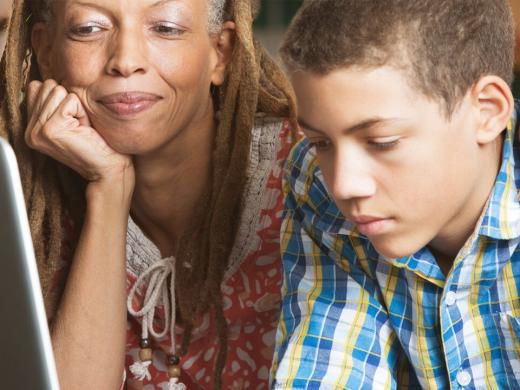Tips for Parents: Talk to Your Child about Appropriate Digital Behavior and Content
Parents create trust with children by initiating open, honest discussions. These dialogues are an opportunity to communicate values and expectations about your family’s appropriate digital behavior, including viewing or sharing content, and apps they can and cannot use.
Check in frequently with your children about their digital experiences to address any potential risk of cyberbullying and harm. Be clear that your intention is to look out for their wellbeing, and that you want to have an open dialogue. Listen to their concerns and express your perspective.
To minimize the risk of cyberbullying or harm from digital behavior, parents can:
- Set clear expectations about digital behavior and online reputation.
- Educate about the harmful effects of cyberbullying, posting hateful speech or comments, sexting, and sharing naked photos of themselves or others (including potential legal issues).
- Be clear about what content can be viewed or shared.
- Identify which apps are appropriate for your child’s use and which are not.
- Establish rules about the amount of time that a child can spend online or on their devices.
- Model positive, respectful digital behavior on your own devices and accounts.
Talk to Your Child about Being a Bystander to Cyberbullying
Having conversations with children about cyberbullying and digital behavior is not a one-time event – it is an ongoing dialogue. Begin talking about these issues before children delve into the world of texting, social media, online gaming, and chat rooms. Help them reflect on real and potential cyberbullying situations, and provide ongoing opportunities to practice ways to respond. Doing so can support the transition from being passive bystanders to being allies who serve as powerful role models for others.
If you think your child is witnessing cyberbullying, there are things that you can encourage them to do - and not do. Such as:
Do not participate. Encourage children not to “like,” share, or comment on information that has been posted about someone, and do not forward a hurtful text to others. Not participating may limit the potential damage of the messages – to others and to themselves.
Do not retaliate or respond negatively. If a child feels that they must respond, encourage a calm, clear, and constructive response. Angry and aggressive reactions can make a bad situation worse. Encourage children (and adults!) to step away from the device so they do not resort to blaming, shaming, or retaliation. This provides time to get calm and centered so they can create a response that makes it clear that others’ digital behaviors are hurtful and unacceptable.
Respond privately to the person who created the hurtful message. If they feel safe doing so, it may be helpful to follow up with the person who created or shared the hurtful message privately, either online, in a phone call, or in person. Doing so can make it clear they do not support the negative actions. It also provides an opportunity to authentically share concerns about the behavior and what might be behind it.
Follow up with the person who was targeted. By reaching out, a child can send a powerful message that they care about the person and they do not support the negative behaviors. If needed, this connection can also provide an opportunity to assist the person in finding help related to the cyberbullying situation.
-
How to Prevent Cyberbullying

This guide helps parents, caregivers, and youth learn ways to identify, prevent, and address cyberbullying.

